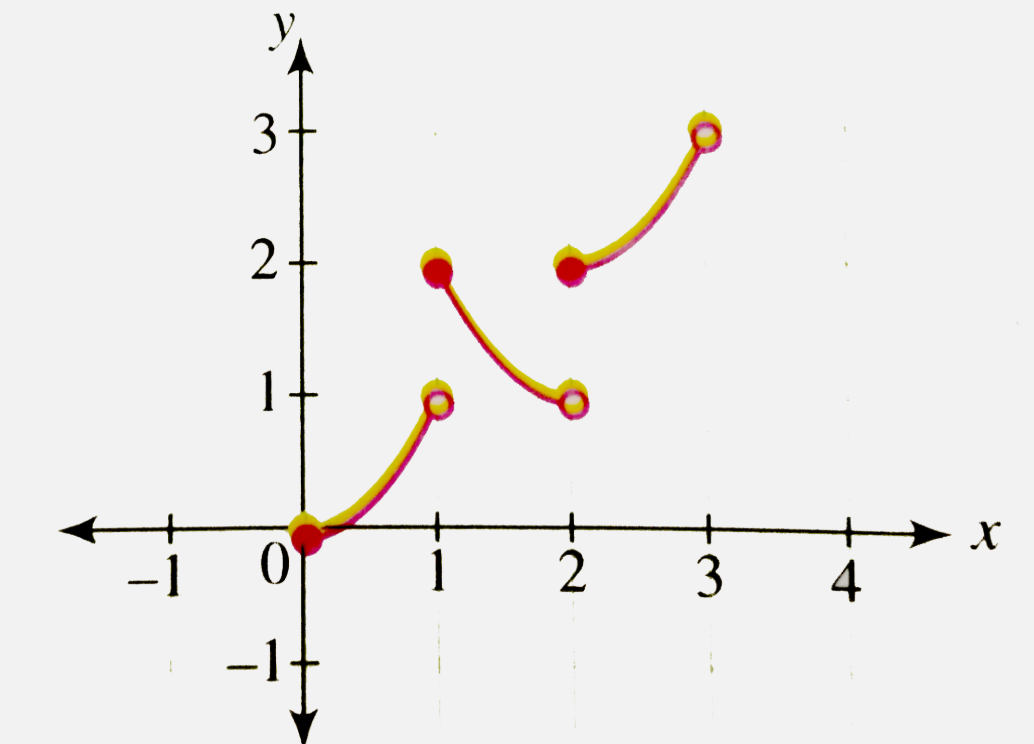Suppose are positive integers. If then which of the following is not true? b. c. d. Solution in Tamil
The correct Answer is:21
Step by step video & image solution for Suppose f(x)=a x+ba n dg(x)=b x+a ,w h e r eaa n db are positive integers. If f(g(20))-g(f(20))=28 , then which of the following is not true? a=15 b. a=6 c. b=14 d. b=3 by Maths experts to help you in doubts & scoring excellent marks in Class 12 exams.
Updated on:21/07/2023Topper's Solved these Questions
- FUNCTIONSBOOK - CENGAGECHAPTER - FUNCTIONSEXERCISE - Comprehension Type
7 Videos
- EQUATION OF PLANE AND ITS APPLICATIONS -IIBOOK - CENGAGECHAPTER - EQUATION OF PLANE AND ITS APPLICATIONS -IIEXERCISE - DPP 3.4
18 Videos
- GETTING STARTED WITH GRAPHSBOOK - CENGAGECHAPTER - GETTING STARTED WITH GRAPHSEXERCISE - Exercise
18 Videos
Similar Questions
Let f(x)=x2−2x−1∀x∈R Let f:(−∞,a]→[b,∞), where a is the largest real number for which f(x) is bijective. If f:R→R , g(x)=f(x)+3x−1 , then the least value of function y=g(|x|) is
View SolutionLet A(0,6,6), B(6,6,0) and C(6,0,6) are three points and point D is moving on the line x+z−3=0=y. If G is centroid of ΔABC, then minimum value of GD is
View SolutionDoes the following graph pass the vertical or horizontal line test ?

View SolutionSuppose f(x)=ax+bandg(x)=bx+a,whereaandb are positive integers. If f(g(20))−g(f(20))=28, then which of the following is not true? a=15 b. a=6 c. b=14 d. b=3
View SolutionLet f, g and h be real-valued functions defined on the interval [0, 1] by f(x)=ex^2+e−x^2, g(x)=xex^2+e−x^2 and h(x)=x2ex^2+e−x^2 . If a,b, and c denote respectively, the absolute maximum of f, g and h on [0, 1], then a=b and c≠b (b) a=c and a≠b a≠b and c≠b (d) a=b=c
View Solutionयदि ∣∣ ∣ ∣∣f(x)g(x)h(x)abcmnr∣∣ ∣ ∣∣ तो सिद्ध करें कि
dydx=∣∣ ∣ ∣∣f'(x)amg'(x)bnh'(x)cr∣∣ ∣ ∣∣
View SolutionIf f(x)=|x−2|andg(x)=f[f(x)],theng′(x)= ______ for x>20
View SolutionIf →a and →b are two unit vectors and θ is the angle between them, then the unit vector along the angular bisector of →a and →b will be given by
View SolutionLet f(x)andg(x) be differentiable function in (a,b), continuous at aandb,andg(x)≠0 in [a,b]. Then prove that g(a)f(b)−f(a)g(b)g(c)f′(c)−f(c)g′(c)=(b−a)g(a)g(b)(g(c))2
View SolutionIf f′(x)=g(x)(x−a)2,whereg(a)≠0,andg is continuous at x=a, then (a) f is increasing in the neighbourhood of a if g(a)>0 (b)f is increasing in the neighbourhood of a if g(a)<0 (c)f is decreasing in the neighbourhood of a if g(a)>0 (d)f is decreasing in the neighbourhood of a if g(a)<0
View SolutionSuppose f(x)=ax+bandg(x)=bx+a,whereaandb are positive integers. If f(g(50))−g(f(50))=28, then the product (ab) can have the value equal to
View SolutionSuppose f(x)=ax+bandg(x)=bx+a,whereaandb are positive integers. If f(g(20))−g(f(20))=28, then which of the following is not true? a=15 b. a=6 c. b=14 d. b=3
View SolutionAssertion (A) : If f(x) , g(x) and h(x) are continueous on [a,b] and differentiable in (a,b) , then, the exists c∈(a,b) such that ∣∣ ∣ ∣∣f(a)g(a)h(a)f(b)g(b)h(b)f'(c)g'(c)h'(c)∣∣ ∣ ∣∣=0
Reason ( R ) : Lagrange's Mean Value theorem is applicable on [a,b] for ϕ(x)=∣∣ ∣ ∣∣f(a)g(a)h(a)f(b)g(b)h(b)f'(c)g(x)h(x)∣∣ ∣ ∣∣=0
Then , which of the following is true?
View SolutionSuppose f(x)=ax+b and g(x)=bx+a, where a and b are positive integers. If f(g(50))−g(f(50))=28 then find the sum of all possible values of a is equal to
View SolutionIf f(x) is continuous in [a,b] and differentiable in (a,b), then prove that there exists at least one c∈(a,b) such that f′(c)3c2=f(b)−f(a)b3−a3
View SolutionLet f(x)andg(x) be differentiable function in (a,b), continuous at aandb,andg(x)≠0 in [a,b]. Then prove that g(a)f(b)−f(a)g(b)g(c)f′(c)−f(c)g′(c)=(b−a)g(a)g(b)(g(c))2
View Solution
